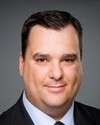Mr. Speaker, I appreciate the time my colleague put into gathering his thoughts and making an intervention on the museum, but this is not a small project. It is a large project. It is a $25-million investment in the museum itself. We are talking about building a national infrastructure. I was saying to the leader of the Green Party a minute ago that this museum has an annual budget from this Parliament of $57 million a year. One-third of that money goes to research. This is a research museum that reaches out to people across the country. This is a museum that does more than just tell these stories, so it is an important project.
I will give my colleague two points on the point he raised in the last half of his speech about the independence of the museum.
First, as was pointed out by my parliamentary secretary, the Museums Act prescribes that. When the Liberals created the War Museum, there was a great deal of controversy. If the member will remember, it had Hitler's car, and that was a great source of debate. There were many Canadians who thought it was offensive or inappropriate. It was not part of our Canadian narrative. Jewish Canadians found it offensive that it was used entice people to come to the museum. There was a great controversy. The Liberal government of the day was frustrated, but on the other hand relieved, that this was a debate to be had at the museum. The museum officials struggled with it, as Jack Granatstein pointed out in his book Who Killed Canadian History?, but it was an important debate about the Canadian history narrative and the Second World War, how to tell that story, what kind of language to use and those kinds of debates. They happen all the time. The government of the day could not interfere with the museum in that very touchy debate at the time because of the Museums Act, and that is a great thing. Let the museum officials figure these things out. Let them debate them. Let them make mistakes and figure it out and tell these narratives and move forward.
Second, on the issue of independence, specifically with this museum, he would note, and some people have noted as well, that the name we have put forward is the Canadian Museum of History, not the Museum of Canadian History. There is a particular reason we chose that language. It is because Canadian history does not begin in 1867. There are our first peoples, the north, and aboriginal Canadians. Canadian history does not begin in 1867. We have been precise in talking to people about how to actually name this museum in a way that is inclusive of all of the narratives of those who today call themselves Canadian. The amendment and the legislation talk about broadening the discussion on this, within a Canadian lens, and not assuming that for all Canadians their sense of belonging to what is now Canada begins in 1867. We chose that language deliberately, again, to give the museum the independence to design their narrative such that it is not just the political one that begins with the Constitution Act of 1867. We are being very deliberate about this to—

